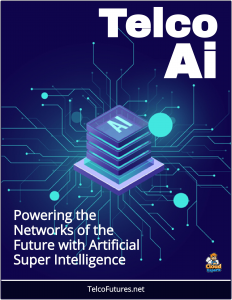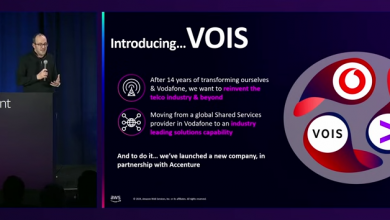 The telecommunications industry stands at the dawn of a transformative era—Telco 4.0—where artificial intelligence (AI) is reshaping how carriers operate, innovate, and generate revenue.
The telecommunications industry stands at the dawn of a transformative era—Telco 4.0—where artificial intelligence (AI) is reshaping how carriers operate, innovate, and generate revenue.
No longer just providers of connectivity, telecom operators are poised to become orchestrators of intelligent, dynamic networks that power the digital economy.
With AI as the catalyst, carriers can unlock unprecedented opportunities to monetize their networks, delivering value to enterprises, developers, and consumers alike. This article outlines bold strategies for telecom leaders to harness AI, turn network capabilities into revenue streams, and lead in the AI-driven future.
The Promise of Telco 4.0
Telco 4.0 represents a paradigm shift, where networks evolve from passive infrastructure to intelligent platforms. AI enables carriers to optimize operations, predict demand, and deliver hyper-personalized services. Meanwhile, 5G, edge computing, and the Internet of Things (IoT) amplify the value of telecom networks, creating fertile ground for monetization.
The global API economy, projected to grow exponentially, underscores the potential for carriers to expose network capabilities—low-latency connectivity, real-time analytics, security services—through Application Programming Interfaces (APIs). By embracing AI, carriers can not only enhance efficiency but also create innovative revenue models that position them as indispensable partners in the digital ecosystem.
The stakes are high. Competition from cloud providers and tech giants is intensifying, and traditional revenue streams like voice and data plans are plateauing. Yet, carriers have a unique advantage: their networks are the backbone of the AI-driven world, enabling everything from autonomous vehicles to smart cities. The question is not whether to act but how to act decisively. Below are strategies to inspire telecom leaders to seize this moment and redefine their future.
1. Harness AI to Unlock Network Intelligence
AI is the cornerstone of Telco 4.0, transforming networks into proactive, self-optimizing systems. By leveraging machine learning, carriers can predict traffic surges, allocate bandwidth dynamically, and reduce latency for mission-critical applications.
For example, AI-driven network slicing allows operators to create virtualized network segments tailored to specific use cases—like ultra-low-latency slices for autonomous drones or high-throughput slices for AR/VR gaming. These capabilities can be monetized as premium APIs, enabling enterprises to access bespoke network services on demand.
Beyond optimization, AI can enhance customer experiences. Predictive analytics can anticipate user needs, offering personalized data plans or bundled services. For instance, a carrier might use AI to recommend IoT connectivity solutions to a logistics firm based on its usage patterns. By embedding intelligence into their networks, carriers can command higher value, differentiating themselves in a crowded market.
2. Build an AI-Powered API Ecosystem
APIs are the currency of the digital economy, and AI amplifies their potential. Carriers can expose AI-enhanced network capabilities—such as real-time location tracking, predictive QoS, or fraud detection—as APIs, enabling developers and enterprises to create innovative applications.
For example, an AI-driven location API could power a retail app that delivers hyper-targeted promotions, while a security API could support secure financial transactions. These APIs are not just technical tools; they are revenue engines. To succeed, carriers must create developer-friendly ecosystems. Centralized API portals with robust documentation, AI-driven testing tools, and sandbox environments can lower barriers to adoption.
Adopting standards like GSMA’s Open Gateway ensures interoperability, while AI-powered chatbots can provide real-time developer support. Carriers should also invest in community-building—through hackathons, partnerships with universities, or collaborations with tech giants like AWS—to inspire innovation. An AI-powered API ecosystem can drive exponential adoption, turning networks into platforms for global innovation.
3. Forge Strategic Partnerships with AI-Driven Industries
The AI era demands collaboration. Carriers must partner with industries like healthcare, automotive, and manufacturing, where AI is driving transformation. For instance, in healthcare, AI-enhanced APIs for secure data transfer can support real-time telemedicine diagnostics.
In automotive, low-latency APIs can enable vehicle-to-everything (V2X) communication for autonomous driving. These partnerships require co-creation, where carriers work with enterprises to develop tailored solutions that leverage network strengths.
Cloud providers are also key allies. By integrating AI APIs with platforms like Microsoft Azure or Google Cloud, carriers can reach broader markets. For example, a carrier’s edge computing API, combined with Azure’s AI tools, could power real-time analytics for smart factories. These alliances amplify revenue potential while positioning carriers as central players in the AI ecosystem.
4. Innovate with AI-Driven Pricing Models
Monetization in Telco 4.0 requires creativity. AI enables dynamic pricing models that reflect real-time value. For instance, carriers can offer usage-based pricing for AI-enhanced APIs, charging based on API calls or data processed.
Alternatively, AI can predict customer willingness to pay, enabling tiered subscriptions with personalized features—like premium QoS for gaming or enhanced security for finance. Revenue-sharing models, where carriers earn a percentage of enterprise revenue from API-enabled services, are particularly promising in IoT or content delivery.
Freemium models can also drive adoption. Offering free access to basic AI APIs, with premium features like predictive analytics available for a fee, can attract developers and scale usage. By leveraging AI to analyze usage patterns, carriers can optimize pricing, ensuring affordability while maximizing profitability.
5. Lead with Security and Trust
In the AI era, trust is paramount. AI-driven networks handle vast amounts of sensitive data, making security a differentiator. Carriers must implement AI-powered security APIs for real-time threat detection, anomaly monitoring, and fraud prevention.
Compliance with regulations like GDPR and CCPA is non-negotiable, and transparent practices—such as regular audits and certifications—build confidence. By positioning themselves as trusted stewards of data, carriers can attract enterprises and command premium pricing for secure APIs.
6. Embrace the AI-Driven Edge
Edge computing, powered by AI, is a game-changer for Telco 4.0. By processing data closer to users, edge networks reduce latency and enable real-time applications like AR/VR or smart cities.
Carriers can monetize edge APIs that deliver AI-driven insights, such as predictive maintenance for industrial IoT or real-time traffic analytics for urban planning. With 5G’s low latency, edge APIs become even more valuable, creating opportunities for premium services. Carriers that invest in edge infrastructure and AI capabilities will lead the market, capturing high-margin revenue.
The Path Forward
The AI era is not a distant future—it’s here. Telco 4.0 demands bold leadership, where carriers reimagine their networks as intelligent platforms for innovation. By harnessing AI to unlock network intelligence, building API ecosystems, forging partnerships, innovating pricing, prioritizing security, and embracing the edge, carriers can transform their networks into revenue-generating powerhouses.
The challenges—competition, legacy systems, regulatory hurdles—are real, but so is the opportunity. Carriers that act with vision and agility will not only survive but thrive, shaping the AI-driven digital economy. The time to lead is now. Let’s build the future of connectivity together.



